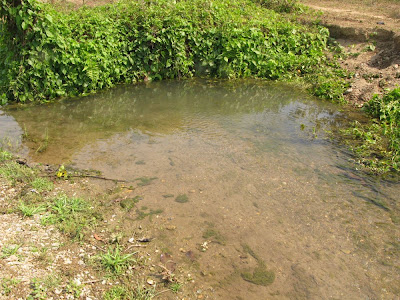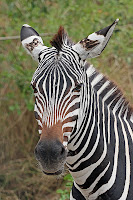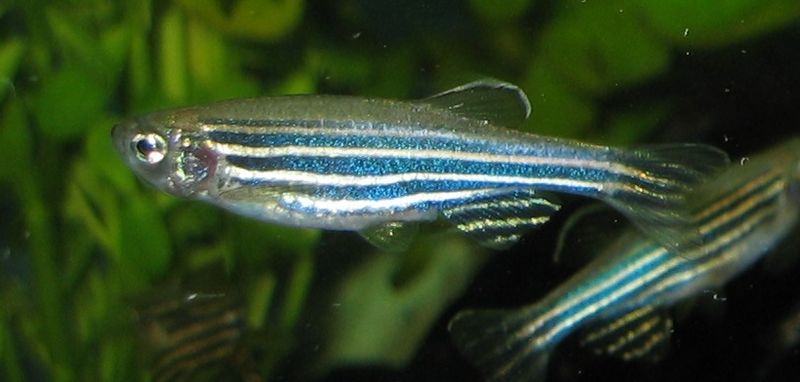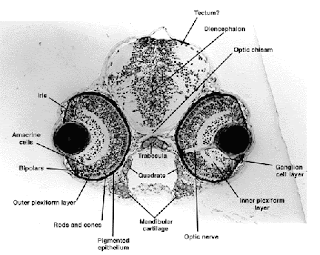In March last year, our PhD student Te Yu Liao and I were able to collect along the Myanmar border with India, in tributaries to the Chindwin River. Our intended stops were Kalaymyo and Tamu, but we also tried stopping at streams along the road. It was very dry at the time, and even large rivers reduced to small streams.
Stopping by one of these streams, in the heart of a large village, we seined a pool with some vegetation. And in there was a zebrafish! Zebrafish in Myanmar, in the Ayeyarwaddy drainage. No way. It had to be something new, and as we have learned from Meinken, all danios are striped anyway. The fish went into formalin, and the chase for the next specimen commenced.
After one more hour, still not one more specimen of this schooling species, but hundreds of Danio albolineatus, and we were called to inspection by the local authorities, so we had to move on. Indeed, we were in a hurry between Kalaymyo and Tamu to arrive at our destination before dark, not only because of likely shortage of accommodation in Tamu, but also because we were given only one day of permanence in Tamu and would need to spend time with local authorities to explain our presence. But hand on heart, you can’t leave a new species like that? Well, we moved on convinced we would find more specimens in some other place. Unfortunately it did not turn out so. We left Tamu with four more specimens from the market, where they hid in heaps of plenty of other little fish, dead to the bone, and with the total of five we eventually left Myanmar. Myanmar markets have large fish, but also large quantities of very small ones, used to prepare a special fish paste, ngapi. In the early morning there is thus plenty of fresh fish in the market and saves on collecting in the wild, with the caveat that fresh fish from the stream preserve better.
So, we were back with only formalin preserved specimens, and in the present times that is bad, because DNA sequencing is in the vogue, and generally a useful tool to check on phylogenetic relationships, and because formalin denatures DNA. Some of us can still do systematics without DNA, however, and that we did. The striped danio turned out not very similar to zebrafish at all, except in the general colour pattern. It is rather related to the spotted species, Danio kyathit from the neighbouring upper Ayeyarwaddy drainage and with one specimen recorded from the uppermost Chindwin.
We named our striped danio Danio quagga. Quagga is the species or subspecies epithet of one of the zebras, so that within the genus of the zebrafish there should be at least one species with a name associating to zebras. We didn’t call it Danio zebra just not to confuse things for the zebrafish people (and perhaps, in the end, ourselves). (But wouldn’t it have been fun?)
Reference
Kullander, S.O., T.Y. Liao & F. Fang. 2009. Danio quagga, a new species of striped danio from western Myanmar (Teleostei: Cyprinidae). Ichthyological Exploration of Freshwaters, 20: 193-199. Open Access PDF
Map from the NRM Ichthyology Collection online database, using Google Maps
Danio quagga and stream: Sven O kullander, CC-BY-NC
Equus quagga: Muhammad Mahdi Karim, from Wikimedia Commons, GNU FDL 1.2






